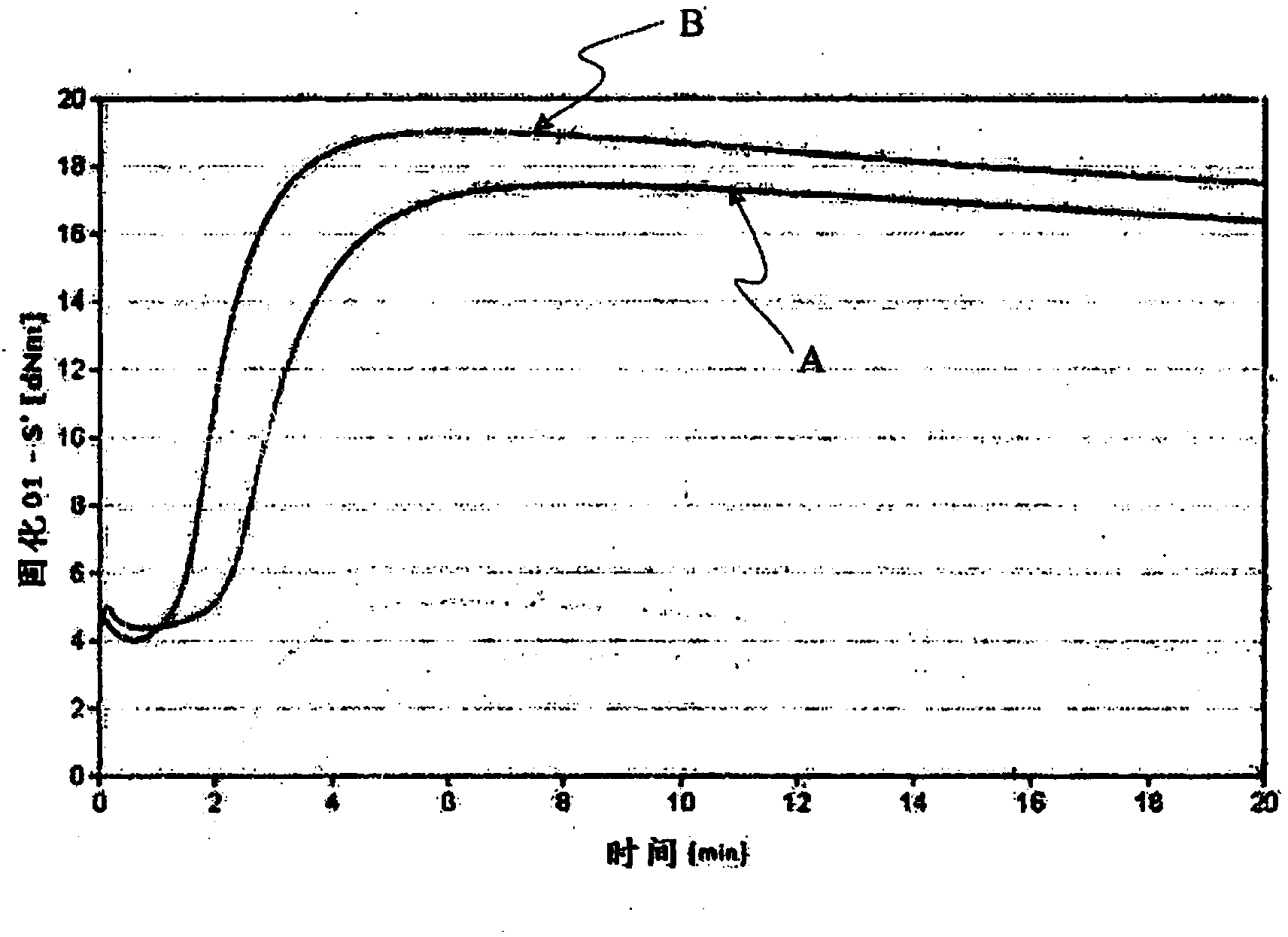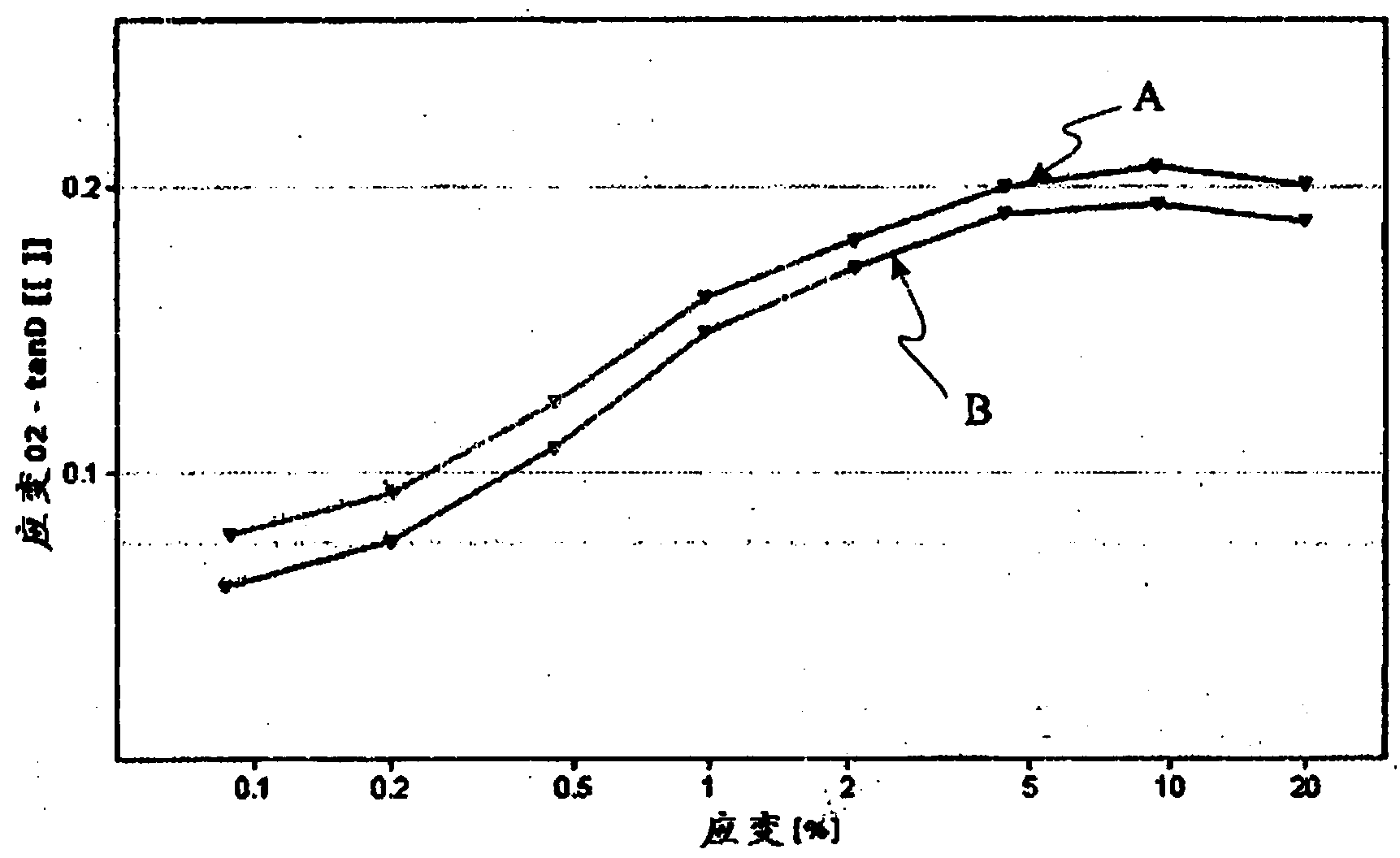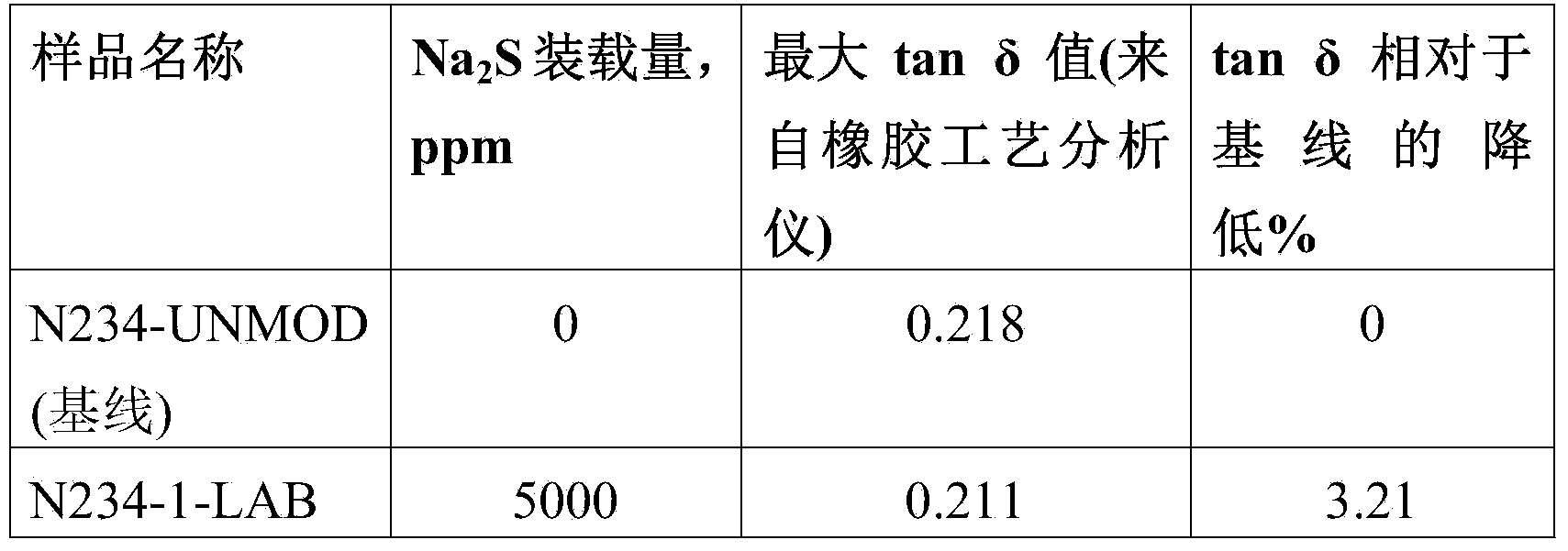An improved process for the production of carbon black
A carbon black and process technology, applied in fibrous fillers, rolling resistance optimization, road transportation emission reduction, etc., can solve low hysteresis, complex and other problems
- Summary
- Abstract
- Description
- Claims
- Application Information
AI Technical Summary
Problems solved by technology
Method used
Image
Examples
Embodiment 1
[0030] 500 g of ungranulated carbon black (grade N234) was placed in a tray and washed with 2.5 g Na 2 A solution of S in water (500 mL) was sprayed evenly and all surfaces of the carbon black were slowly exposed to the solution. The carbon black was flipped several times over a 2 hour period to promote good coverage. The obtained modified carbon black was heated in an oven at 800° C. for 8 hours under a reducing atmosphere, and turned over 4-5 times every 2 hours. Rubber compounds were prepared and tested using the dry modified carbon black (designation: N234-1-LAB). The properties of this compound were compared with those of a rubber compound prepared using unmodified carbon black N234 (designation: N234-UNMOD).
[0031] Preparation of Rubber Compounds
[0032] The compositions of the rubber compounds tested are provided below.
[0033] Element
Quantity, percentage (pph)
Natural Rubber (RSS4 Level)
75
Butadiene rubber (1220 grade)
25...
Embodiment 2
[0040] by adding Na 2 A 2% solution of S in water (previously prepared) was added to the granulator at an appropriate flow rate, and 100 ppm of sodium sulfide (Na 2 S) added to the granulation step of the manufacturing process. The treated carbon black was then dried in a rotary dryer according to common industrial processes. Samples of treated, granulated, dried carbon black were collected and compounded with rubber for testing (mark: N234-2-IND).
[0041] Preparation of Rubber Compounds
[0042] The compositions of the rubber compounds tested are provided below.
[0043] Element
Quantity, percentage (pph)
Natural Rubber (RSS4 Level)
75
Butadiene rubber (1220 grade)
25
Carbon black (N234 grade)
50
Zinc oxide
4
stearic acid
2
Antioxidant (6PPD)
1.5
sulfur
1
Accelerator (CBS)
1
[0044] These ingredients were mixed with a two-roll mill (friction ratio: 1:1.4) for ...
PUM
 Login to View More
Login to View More Abstract
Description
Claims
Application Information
 Login to View More
Login to View More - R&D
- Intellectual Property
- Life Sciences
- Materials
- Tech Scout
- Unparalleled Data Quality
- Higher Quality Content
- 60% Fewer Hallucinations
Browse by: Latest US Patents, China's latest patents, Technical Efficacy Thesaurus, Application Domain, Technology Topic, Popular Technical Reports.
© 2025 PatSnap. All rights reserved.Legal|Privacy policy|Modern Slavery Act Transparency Statement|Sitemap|About US| Contact US: help@patsnap.com



